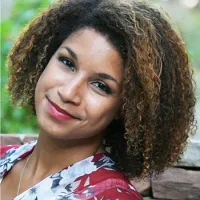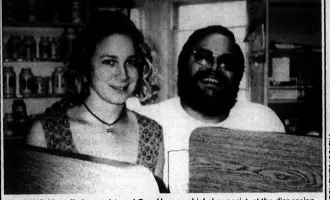Sponsorship is the Key to Women’s Success
What is the single most effective way to ensure success as a woman in the workplace? Sponsorship. We’ve all heard about gender-based discrimination in the workplace: men get paid more than women for the same positions and the higher up the leadership ladder, the less women there are. Why is that?
The UCSF Office of Career and Professional Development (OCPD) is taking steps to help women get ahead in the workplace. Their Women’s Career Advancement series teaches concrete tools to help women navigate gender-discrimination and culture driven biases.
Last Wednesday, Anna Correa, the OCPD Program Director, led the second lunch workshop dedicated to sponsorship. Her focus: What is a sponsor and how do we find one?
One reason for the gender pay gap, according to the OCPD workshops and Sheryl Sanberg in her book, “Lean-In,” is that men tend to overestimate their abilities and seek out promotions they may not be quite ready for. Women tend to work harder with the expectation that hard work speaks for itself: you will get a promotion if your work clearly demonstrates that you deserve it.
This discrepancy gives John the edge over Jane – he makes himself seen and heard, and confidence contributes to outward credibility.
How can women ensure they are heard and considered for those promotions they may not be quite ready for, but have the potential to launch real success? Sponsorship.
It is more than mentorship. A sponsor is a person in a position of power that actively advocates for you in the workplace, whereas a mentor listens to you and offers advice. While both are important, a sponsor is especially critical for women because they meet that gap between high quality work and opportunity. Sponsors share their professional networks, bring the attention of senior executives to your achievements, and recommend you for new positions.
According to the OCPD workshop, there are three steps to securing a sponsor: 1) reflect on your values, interests, and skills to set strategic goals, 2) identify the correct sponsor(s) to help meet those goals, and 3) approach and establish an effective sponsor relationship.
Correa stressed the importance of approaching sponsors with a specific ask. You have to know where you want to end up, or at the very least have a concrete understanding of your interests and motivators in order for a sponsor to effectively help you.
So, plan your trip. Where do you want to go and why?
Someone pursuing a PhD in Life Sciences, for example, may want to be managing a lab in 5 to 10 years at an organization where they can pursue their own research ideas. Or a student of dentistry may want to be a partner in a group practice.
The workshop was interactive, and included specific examples relevant to different UCSF professional schools as well as a worksheet filled out specific to each individual’s path.
Once a clear picture of values, interests, and skills emerges in relation to career goals, women can identify a sponsor that matches them.
A graduate student’s PI may value publications as measures of success. If that student wants to continue research, that value aligns. If a student wants to move into industry, developing novel technology or demonstrating effective communication skills may be more valuable than the number of publications. A sponsor with the same value or measure of success will be more prepared to help a student achieve it.
By the same token, a sponsor with similar interests will be more familiar with opportunities in that field, and may have tools or contacts for developing skills specific to that area.
In defining these attributes to effectively communicate them to a sponsor, Correa recommended reflecting both inward and outward.
In looking inward, women should not only define where they want to be in 5 to 10 years, but also what their specific needs are at this stage. They should ask themselves, “What can a sponsor help me with?”
Do you need to be placed in the path of opportunity for an internship, or recommendations for informational interviews? A third year pharmacy student interested in public health and policy may need to get an internship at the CDC. What is one goal she can achieve in the next 6 months to move her forward?
Keep the momentum going.
In the next 6 months, that pharmacy student can network to find a former CDC Pharmacy intern and ask them about their experience.
Women also need to define the outward impact, meaning how their work affects others and their perceived strongest skills. People don’t typically reflect on their outward impact, but it’s important to understand who benefits from the work and how.
To get a sense of this, Correa recommended asking colleagues and bosses what you are good at and how you’ve helped them.
The sponsor that matches an individual’s needs can change over time, and more than one may be needed. For example, a sponsor for a graduate student having a difficult time publishing may include other PIs that can be potential collaborators.
In identifying the best sponsor, women should research a potential candidate and determine their style of sponsorship. What are the outcomes of others sponsored by this individual? What are this sponsor’s expectations and definitions of support? Some sponsors will go to bat for you even when you’ve made a mistake, which was apparently the case for George Washington who had Andrew Hamilton’s back despite a reactive personality that ruffled many feathers.
What I found particularly interesting was Correa’s recommendation to find out what is motivating the sponsor to take interest in you in the first place. Why would they help you? The typical strongest motivator is the desire to work with good people – if a sponsor sees a rising young potential they enjoy interacting with, they may want to keep them in the same field.
This motivator was apparent in Sheryl Sandberg’s relationship with her first major sponsor, Harvard Professor Larry Summers. They both had the same interests in economics and worked well together. This led to his recommendation for her as a research assistant at the World Bank, and her career snowballed from there.
The workshop closed with tips to establish a relationship once you’ve identified a potential sponsor. These tips include: asking questions or for feedback based on their expertise, approaching with an idea or solution to a problem they have, identify a conference they attend and apply to present, or join a community they are actively involved in. The goal is to begin a relationship around work and to demonstrate your potential or willingness to grow.
All the examples listed in this article were taken directly from the seminar slides or reflective assessment worksheet. For access to these materials, reach out to Anna Correa at anna.correa@ucsf.edu.
Visit the OCPD Programs website for more information on this workshop series and other career prep opportunities.


